QuestionQUESTION: my chocolate labrador was bred on the 3rd of dec and again 7th dec 2008. on friday 30th jan2009 she threw up all over the floor and there was a jelly substance coming from her vulva. she went of her food and kept whimpering for me, i went out of the room to refill her water when i came back in it stunk of stale water and there was a pool of wet with mucas in it.
now its monday 2nd feb and my vet said everything is ok lola is eating , drinking, poohing and weeing. what was this that happened and could it be she was slipping a pup.
ANSWER: Hi Vicki Like with humans, when their "Water Breaks" dogs have a Mucus Plug that when breaks produces a watery discharge. This might have been what you witnessed. Labor generally follows within 24 - 48 hrs.
The mucous vaginal discharge turns to a thin greenish discharge a few hours prior to delivery. Primary uterine contractions (labor) begin shortly afterward. A dog may show no pain from these contractions, but she will be nervous and restless.
I also suggest that you start taking your dogs temp and recording it at the same time each day. The normal dog temp is between 101 - 102.5 In most cases, when the expectant mothers temp drops below 100, she will deliver within 24 hrs.
Some people will try to "feel" for the puppies, and try to count how many there are. I strongly advise against this unless you have lots of experience. Trying to feel for the puppies can cause them to become dislodged from the wall of the Uterus
I suggest that you select a secluded place - away from high traffic areas, and away from drafts where the mother can deliver and tend to her new puppies in peace. It is very tempting to want to show off the puppies, but it is best not to allow friends, neighbors, and or lots of family members to visit during the first 3 weeks.
When the time to give birth arrives the mother will show signs of contractions and possibly begin to shiver. After each puppy is delivered it will be proceeded by a greenish, fluid-filled sac (placenta). Each puppy is attached to a placenta by an umbilical cord. In larger litters, you may not see one placenta passed immediately after every puppy. Some placentas may be retained and be expelled gradually days after all puppies are born. Most puppies are born head first, but as many as one-third may be born hindquarters first. Either position is considered normal.
In most cases, after each puppy is born, the afterbirth will soon follow. However sometimes - for whatever reason- not always. It is not uncommon for two afterbirths to pass at the same time, what is important is that all the afterbirths eventually pass.
In some cases, unknown to us, the mother can and will pass the afterbirth outside, while using the restroom, making it had to be completely sure that each one has passed.
Diarrhea is normal, for a couple of days, due to eating the placentas and afterbirth, and it is also normal for her to have a vaginal discharge that may appear bloody or a greenish-black color for a few days to 2 weeks, but this does not indicate a problem unless it persists beyond 4 weeks of whelp.
It is very important that the puppies are kept warm and free from any drafts. I use a professional whelping box, but some people find that a chills plastic wadding pool works just as well. If you can not find a wading pool then you can purchase a large plastic storage bin at Home Depot, that also works well. Cut a door in one side so the mother can come and go, but not all the way to the bottom - that way the puppies can't get out. Keep bottom covered with clean dry towels, blankets, etc.
During the delivery process, I like to have a box, close basket, or something similar handy with a heating pad covered with a towel handy. After each puppy is born, and while mommy is busy delivering the next, I put the puppies in the basket - with the heating pad to keep warm. This is a safe, warm place for them to rest until all the puppies are delivered.
It is a good idea to purchase a postal scale and have it handy during the birthing process. After each puppy is born, and while the mother is preparing to deliver the next puppy, you should weigh each puppy and record it - along with any identifying marks on a piece of paper. Example. Puppy One - Black with one white paw - weight 13-oz.
Each day, at the same time, weigh the puppies and record. If the puppies are gaining weight, all is well. As long as the puppies are gaining weight and the mother is taking care of them, I strongly suggest that you leave them alone. Let mommy be the mommy. However, if you discover that one or more of the puppies are not gaining, or in fact is losing weight, then it will be time to offer supplemental feedings.
I suggest K-9 Gold for supplemental feedings, and I also suggest adding a scoop to the mothers food each day.
Most puppies are weaned between 5 - 6 weeks, but this is normally left up to the mother dog - she knows the best time. When the mother dog stops feeding the puppies, it will be time to begin introducing them to dog food. This is normally done by crushing up dry food and making an oatmeal like paste by adding K-9 Puppy Gold Puppy Powder and water. At this point, you should be feeding the puppies 3 - 4 times per day. Gradually, over the next couple of weeks, you will add less and less of the liquid until the puppies are eating the dry food alone.
During this time you should keep a close eye on the mother dogs mammary glands. If, after weaning the puppies, she continues to produce milk her breasts could become engorged and painful. Hot towels and a gentle massage can help reduce the congestion. Complete withdrawal of all food and water for 24 hours often works well. If you discover that the mammary glands have become red, hot to the touch, or seem to be painful, you should contact your veterinarian ASAP, for all of these symptoms could be the sign of an infection.
In closing I want to point out that the above suggestions are only a few of the many things that a breeder needs to know, and in no way do I suggest that I have covered everything. Good luck, and please do not hesitate to contact me if you have additional questions.
Sincerely,
Penny DiLoreto
www.puppies-dot-com.com
---------- FOLLOW-UP ----------
QUESTION: first of all thankyou for that. 2nd. we are now on tueday 03/02/09 lola has been panting heavily and the odd grunts. also shaking and restless. no other discharge is yet to be seen. this has been going on for about 6 hours. is this normal or is it a false alarm her temp was 37.7 - 37.6 now its down to 37 - 37.1. stools are loose. she is a first time mother i did breed my bichon but the signs are totally different.
AnswerHi Vicki. The symptoms you describe are all consistent with pre-labor and I feel that your lab is very near her due date.
Just keep in mind, that no two deliveries are the same and it is not unusual for your Lab's labor to be different than that of your Bichon's.
Please keep in touch, and do not hesitate to contact me if you have additional questions.
Sincerely,
Penny DiLoreto
www.puppies-dot-com.com

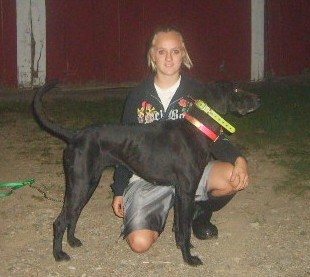 my coondog gyp....wont come inheat!
QuestionQUESTION: I have a 5 year old Plott coondog fem
my coondog gyp....wont come inheat!
QuestionQUESTION: I have a 5 year old Plott coondog fem
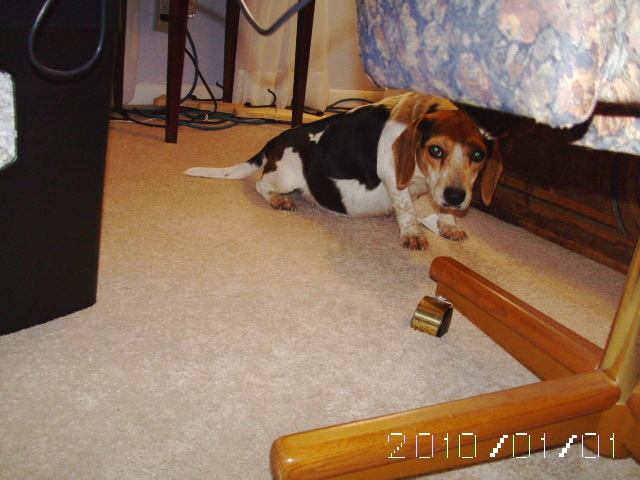 Pregnant miniature beagle
QuestionMaggie
QUESTION: Help! Our beagle is ver
Pregnant miniature beagle
QuestionMaggie
QUESTION: Help! Our beagle is ver
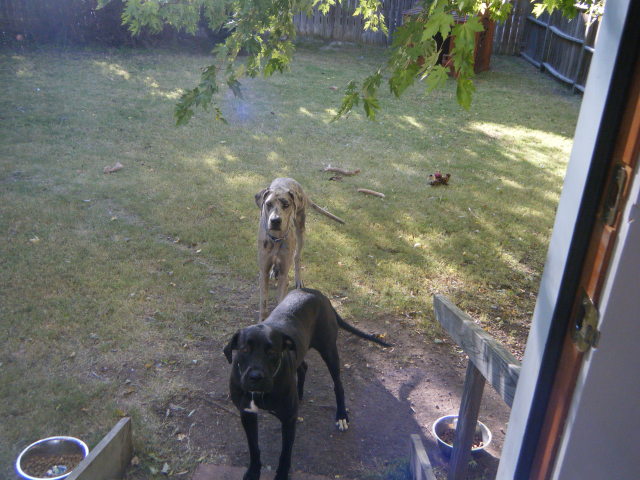 Great Dane Whelping
QuestionQUESTION: My female great dane went into labor
Great Dane Whelping
QuestionQUESTION: My female great dane went into labor
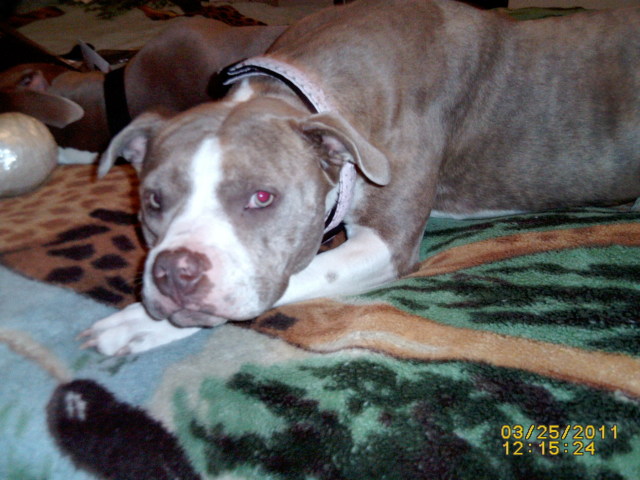 my baby dajah having babys
Questiondajah
QUESTION: hello and thank you for
my baby dajah having babys
Questiondajah
QUESTION: hello and thank you for
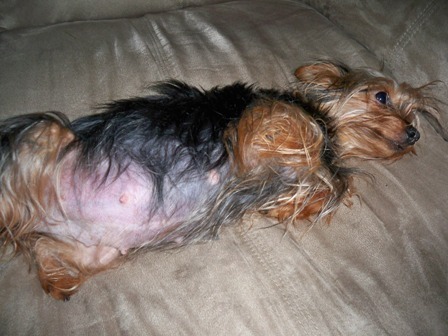 Pregnancy size/weight gain?
QuestionQUESTION: My 4 lb Yorkie girl seems to be extre
Pregnancy size/weight gain?
QuestionQUESTION: My 4 lb Yorkie girl seems to be extre